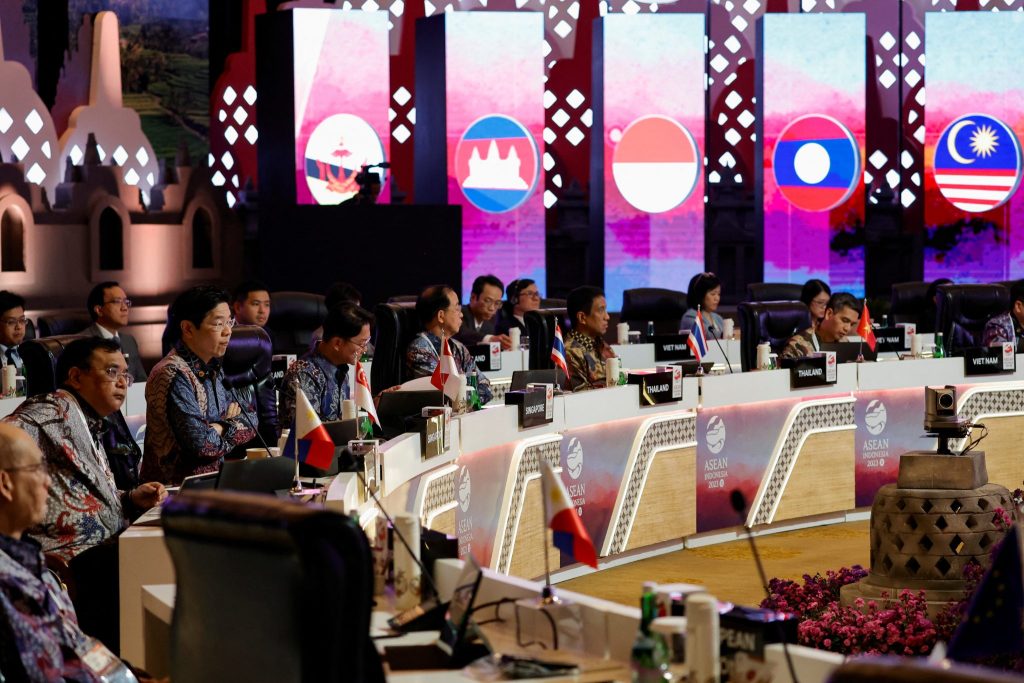ASEAN Centrality is a relatively new concept. It was not mentioned in ASEAN’s founding Bangkok
Declaration of 1967. Nor was it mentioned in in ASEAN’s 1976 documents — the Treaty of Amity and
Cooperation or Declaration of ASEAN Concord — which set out the terms of relationships among ASEAN
members and between ASEAN and outside powers.
ASEAN Centrality came into vogue mainly after ASEAN acquired greater international prominence with the creation of larger ‘ASEAN-Plus’ institutions, such as the ASEAN Regional Forum in 1994 and the East Asia Summit in 2005.
There are three aspects to ASEAN Centrality. First, ASEAN has been the most successful regional organisation in the Asia-Pacific. Second, ASEAN has been the building block of regional institutions, especially groups like the East Asia Summit and ASEAN Plus Three. Third, ASEAN is the only neutral broker with the convening power and credibility to organise multilateral dialogues. This is not least because of the mistrust among the great powers of the region — China, the United States, Japan and India.
ASEAN Centrality has come under doubt, especially due to the growing rivalry between the United States and China. Critics argue that such rivalry means the ‘return of geopolitics’ to the region, diminishing ASEAN’s autonomy. Not only have great powers acquired greater influence over the regional architecture, but ASEAN seems hapless in addressing conflicts, especially the South China Sea dispute.
But such views might be overstated. ASEAN centrality remains relevant when it comes to dealing with tensions and disputes with outside powers, including China.
Ensuring that intra-regional conflicts do not lead to war was ASEAN’s primary founding goal, rather than becoming a vehicle for economic integration like the European Union or becoming a military alliance like NATO. But ASEAN’s approach to conflicts is best described as conflict avoidance or management, rather than conflict resolution.
ASEAN has followed the ‘ASEAN Way’ — an informal, consensus-based approach. In the ASEAN Way, the process is as important than the product. It has often led to ‘sweeping conflicts under the carpet’ until the climate is right for reducing those conflicts’ severity. Though it has eroded somewhat in recent years, the ‘ASEAN Way’ remains a central element of ASEAN regionalism.
But ASEAN’s conflict management approach has limitations. Its own intramural dispute settlement mechanism — the ASEAN High Council of Foreign Ministers — has never been used. ASEAN members have undertaken mediation only when certain conflicts escalate — for example, during the Thai–Cambodia skirmishes over the Preah Vihar temple in 2011 and after the military coup in Myanmar in 2021. This included Indonesian-led efforts to among all parties — but is yet to produce any decisive breakthroughs.
ASEAN members have been more willing to resort to external mechanisms, especially the International Court of Justice, which has made successful interventions in Indonesia–Malaysia, Malaysia–Singapore and Thai–Cambodia territorial disputes.
Because of China’s central place, with its sweeping nine-dash line, the South China Sea conflict is not an intra-ASEAN conflict — even though part of the dispute is among ASEAN members themselves. The only precedent for ASEAN managing this type of conflict involving a powerful non-member was the conflict resulting from the Vietnamese occupation of Cambodia. But then, neither Cambodia nor Vietnam were ASEAN members — and China is a much more powerful adversary than Vietnam was.
ASEAN’s main goal in the South China Sea conflict has been to avoid outright escalation leading to war, while denying China legitimacy of its sweeping territorial claims. This has had some success. There has been no major military confrontation and China has arguably not enforced its claim over the nine-dash line.
Despite ASEAN remaining mostly cohesive, Code of Conduct (COC) negotiations on the South China Sea have taken far too long. While the process of obtaining a COC is important in itself, there is no assurance that a COC would significantly reduce tensions in the area — China has already significantly militarised its presence.
Yet ASEAN Centrality cannot be dismissed. Respecting ASEAN’s norms of peaceful engagement is regarded by China and the United States as being in their own strategic interests. China and the United States engaging in outright military confrontation in the South China Sea would push ASEAN to the brink of extinction or irrelevance. This would damage the credibility of both the United States and China as responsible actors. This acts as a restraint on their behaviour.
To ensure this restraint, ASEAN not only needs to maintain some unity on the South China Sea conflict, but should also step up its vigilance over Chinese military activities and exert cartographic pressure. This pressure was seen in the recent case of Chinese maps eliciting protests from multiple ASEAN countries.
Continuous vigilance is critical to stability in the South China Sea. ASEAN should pursue an unconditional and unexceptional approach to creating a rules-based order in the South China Sea.
Any initiative to limit military deployments should conform to international law. Measures such as advance notification of military exercises should apply to all nations, including China, rather than just to ‘outside powers’ like the United States. This way, ASEAN can keep the South China Sea open to all nations while developing rules of peaceful conduct among claimants. The future of ASEAN Centrality may depend on the success of this effort.
Amitav Acharya is Distinguished Professor of International Relations at American University in Washington, DC, and the author of ASEAN and Regional Order: Revisiting Security Community in Southeast Asia.
This article is part of an EAF special feature series on 2023 in review and the year ahead.

